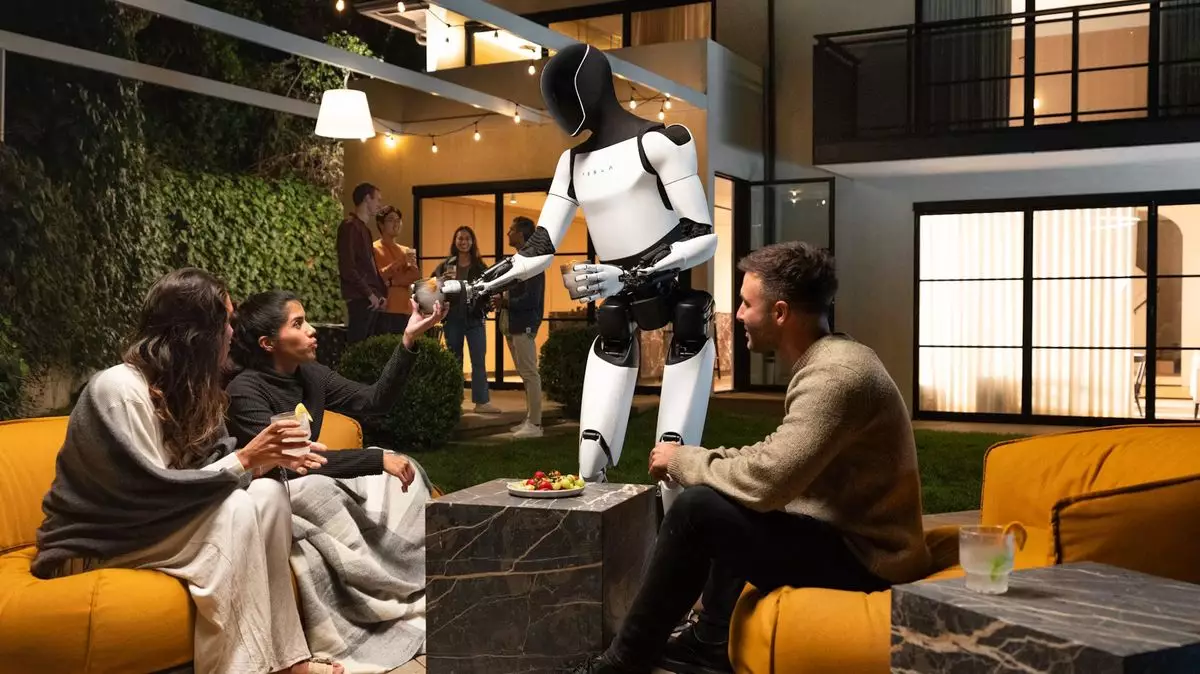In recent years, advancements in robotics have soared, especially with public figures like Elon Musk at the forefront. Musk’s ambitious ventures often evoke excitement and skepticism in equal measure, and his humanoid robot, recently showcased, was no exception. While his vision of automated helpers striding alongside humans captivates numerous imaginations, the tangible reality presents a more complicated picture.
When Musk initially revealed his humanoid robot, many observers were met with mixed reactions. In 2021, the presentation featured what could best be described as a person wearing a suit, leading some to question the authenticity of the claim. Fast forward to 2022, and the prototype exhibited some walking capabilities, albeit slow and somewhat clumsy. The development drew interest due to its novelty, yet no one could have anticipated the tidal wave of grand proclamations that would follow during Tesla’s recent event.
At the event dubbed “We, Robot,” Musk presented a series of Optimus robots, proclaiming their ability to perform a myriad of tasks. From teaching to babysitting and even bar-tending, the applications of this technology seemed virtually limitless. Musk remarked on the universal appeal of such robots, suggesting that demand could reach every corner of the globe, thereby positioning these creations as the next monumental technology.
Despite the excitement surrounding Musk’s announcements, critical observers noted a discrepancy between promise and performance. While the idea of a robot assisting in daily life is astounding, skepticism crept in regarding the actual capabilities of the showcased machines. Reports indicated that the Optimus robots seen serving drinks were not autonomous; they were remotely controlled by Tesla employees. This revelation has prompted valid concerns about the level of sophistication the technology possesses.
Moreover, throughout the presentation, Musk notably refrained from labeling the robots as AI-driven or self-sufficient, which raises further questions about their operational independence. Given Musk’s history of bold declarations often outpacing reality, it’s crucial to evaluate whether the promises made are substantial or mere projections aimed at garnering media attention and public enthusiasm.
The public’s reaction is often a mix of fascination and skepticism. People yearn for innovation and the conveniences that could come with fledgling robot technologies. However, the prevailing notion is one of cautious optimism. Many recall Musk’s prior claims regarding self-driving vehicles and Mars colonization, leaving a layer of doubt regarding his latest venture into humanoid robotics. Are we, as a society, prepared to witness the confident acceleration of robotic technology, or are we merely spectators in a spectacle destined to fizzle out?
Elon Musk regularly evokes a vibrant sense of future possibilities, painting vivid images of technologically advanced worlds. Still, the key challenge lies in bridging the gap between artistic vision and applicable reality. The capabilities of these humanoid robots remain ambiguous, often hanging in the air, with ambition overshadowing practicality.
A significant aspect of this discourse centers on timing. While the dream of humanoid robots performing essential functions is enticing, the timeline Musk projects remains highly contentious. Experts often caution against expecting technological advancements to materialize rapidly. The journey from prototypes to functional, reliable robots capable of seamlessly integrating into daily life is intricately complex. Issues of safety, ethics, and human-machine interaction pose challenges that must be addressed before we can unlock the full potential of robots like Optimus.
As we watch these developments play out, only time will clarify how closely reality aligns with Musk’s grand visions. The Optimus robots may lead to breakthroughs in humanoid robotics, but the assertion that these creations will soon be walking our streets and assisting in our lives is arguably premature. The journey of innovation is often filled with ups and downs, and the case of Elon Musk’s humanoid robots is no exception. It serves as a potent reminder of the fine line between audacity and reality in the world of technological advancement.

